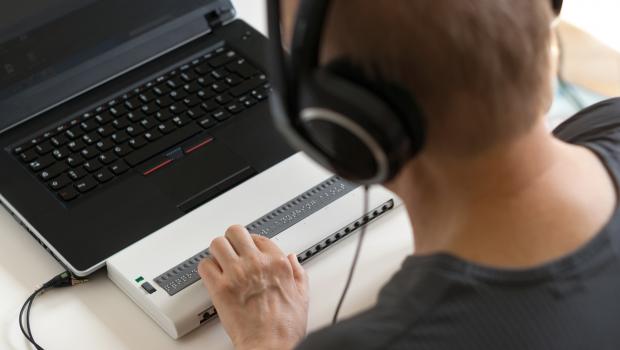
“Ninety-nine-point-nine percent of images on Twitter lack any kind of description - and that is not hyperbole, that is the actual statistic,” says Alan Lundgard, a graduate student in the Computer Science and Artificial Intelligence Laboratory (CSAIL) and lead author of the paper. Their work could help journalists, academics, and communicators create descriptions that are more effective for blind individuals and guide researchers as they develop better tools to automatically generate captions.
#Sony laptop screen reader for blind software#
They also created a conceptual model that can be used to evaluate a chart description, whether the text was generated automatically by software or manually by a human author. Ultimately, they found that captions for blind readers should focus on the overall trends and statistics in the chart, not its design elements or higher-level insights. These researchers conducted a study with blind and sighted readers to determine which text is useful to include in a chart description, which text is not, and why.

This alternative text is often missing from online charts, and even when it is included, it is frequently uninformative or even incorrect, according to qualitative data gathered by scientists at MIT. The chart was amplified by news sites and shared on social media platforms, but it often lacked a corresponding text description to make it accessible for blind individuals who use a screen reader to navigate the web, shutting out many of the 253 million people worldwide who have visual disabilities.


In the early days of the Covid-19 pandemic, the Centers for Disease Control and Prevention produced a simple chart to illustrate how measures like mask wearing and social distancing could “flatten the curve” and reduce the peak of infections.


 0 kommentar(er)
0 kommentar(er)
